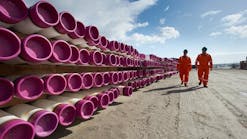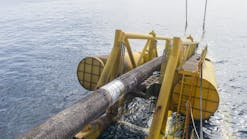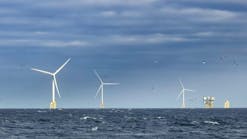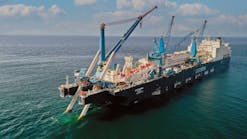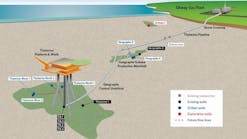Hacker prompts judge to shut down DOI sites
Months after a hacker wormed his way into the Bureau of Indian Affairs (BIA) website, other agencies under the US Department of the Interior (DOI) umbrella are feeling the sting. A major hindrance to doing duties in the office is the lack of access to outside e-mail, said Caryl Fagot of the Minerals Management Service (MMS). It's taking longer to complete some tasks and some cannot be handled as well manually as they were when performed electronically, she said.
The problem stems from a federal lawsuit that alleges mismanagement of Indian funds at the BIA.
"The plaintiffs hired a hacker to get into BIA's website, and they did," Fagot said about the twist in the years-old lawsuit. "That's when the judge said, 'Oh no, we can't have this. We're going to shut down the website for the DOI."
On Dec. 6, the websites for the DOI came down, including the MMS site at www.gomr.mms.gov. All the agencies unaffiliated with the BIA are requesting the judge allow their websites to return to active duty. Some sites have been already approved. "We haven't gotten the OK from the judge yet," Fagot said in early February. "It's vital for our folks to be able to have access to our infor-mation."
To answer that need, the MMS set up a site at www.temporarygomr.com on an outside server. The site is updated weekly.
Unocal's Trident appraisal encouraging
Unocal called its first Trident appraisal well in the US Gulf of Mexico encouraging. Located in Alaminos Canyon 903 about 1.5 miles northwest of the original discovery, the $32 million appraisal well was drilled to a total depth of 20,500 ft in 9,727 ft water depth over 68 days. "The combination of lateral continuity and quality of reservoir rock encountered in this well is a cause for optimism," said Mike Bell, Vice President of Unocal's Deepwater USA business unit. "This is an important step forward on the path to establishing commerciality; however, significant work lies ahead before we have a commercial development plan that gives us the confidence to move forward."
The appraisal well encountered the same hydrocarbon-bearing intervals found in the discovery well. Tests on the appraisal well indicate the same 40° API fluid found in the discovery well, an important factor in future development economics. Unocal said it may drill a second Trident appraisal well as early as this year. The company plans to analyze deepwater development options, including the likely use of floating production, storage, and offloading (FPSO) technology now that the MMS has said it will accept applications for the use of FPSOs in the Gulf. Operator Unocal has 59.5%, Chevron has 15%, Ocean Energy has 12.75%, Agip has 8.5%, and Phillips has 4.25%.
Pemex has find off Veracruz
Petroleos Mexicanos (Pemex) made a natural gas discovery off Mexico's Gulf coast, although the size of the reserves is undetermined, the state oil monopoly said. Company Chief Raul Munoz said Pemex found gas at Lankahuasa, off Veracruz. "The initial information is positive," Munoz said.
Pemex expects to invest $14.7 billion in 2002, much of that destined for exploration and production in the Cantarell oil field in a pair of onshore basins. Included in the plans are contracts for natural gas production. Pemex said the contracts combine different services the state company would tender to private contractors under the public works law. Under the contracts, Pemex expects to produce an additional 1 bcf/d of natural gas by 2006. Pemex considers the multiple-service contracts to be the fastest way of reducing future natural gas imports. Munoz said Pemex has additional plans for the future.
Pemex plans to develop the Cantarell and Lankahuasa discoveries in the Gulf of Mexico.
"We'll have to explore in deepwater sometime in the future, and we'll have to prepare ourselves for that," he said, adding the company would also need access to the appropriate technology for work in the deepwater Gulf of Mexico.
New umbilicals facility for Gulf
Kværner will invest $11 million in a new umbilicals production facility for the subsea segment of the oil and gas industry in the Gulf of Mexico area.
"As the financial challenges of Kværner now are about to be solved, I'm happy to announce that we are able to invest in the exciting growth area of umbilicals," Kværner Group President and CEO Helge Lund said. "This is a growing market and the profitability is good.
"If we want to maintain our market share and to take part in the coming growth, we must increase our production capacity further," Lund said.
To do this, Lund said, Kværner must take advantage of demand growth in subsea equipment expected to occur in the Gulf of Mexico, as well as offshore West Africa and Brazil. Kværner said it opted to establish new production capacity in the Gulf of Mexico to meet that demand. The umbilicals are developed in Norway. The Moss, Norway, production facility has a 50% overall market share and exports 95% of its production.
First oil flows at Nansen
The deepwater Nansen Field reached first production earlier this year from the first of three subsea wells, Kerr-McGee said. Production from the Nansen Field, in 3,700 ft water depth, is expected to reach a peak rate of 40,000 b/d and 80 MMcf/d of gas during 4Q 2002 following completion activities at the remaining nine dry tree wells. "We are developing two additional deepwater hubs using the truss Spar design - Boomvang, scheduled to come onstream during the second quarter, and Gunnison, set for first production in early 2004," Kerr-McGee CEO Luke R. Corbett said.
The Nansen Field in East Breaks 601, 602, and 646 was developed with the world's first truss Spar. An open truss structure at the base of the new spar design enhances the hull stability while reducing size and cost. Using this spar design allowed the companies to reach first production at Nansen less than two years after sanction. Operator Kerr-McGee has 50%, and Ocean Energy has 50%. The two are developing the Navajo gas field at East Breaks 690 as a subsea tieback to the Nansen spar. First production from Navajo is expected mid-year. A separate exploratory well was drilled at the West Navajo prospect. If successful, it would also be tied back to the Nansen facility.


